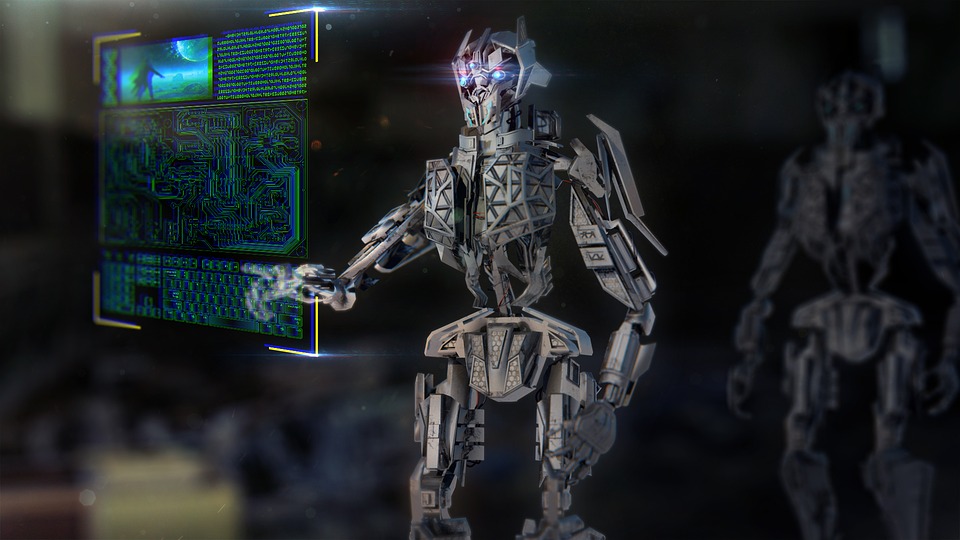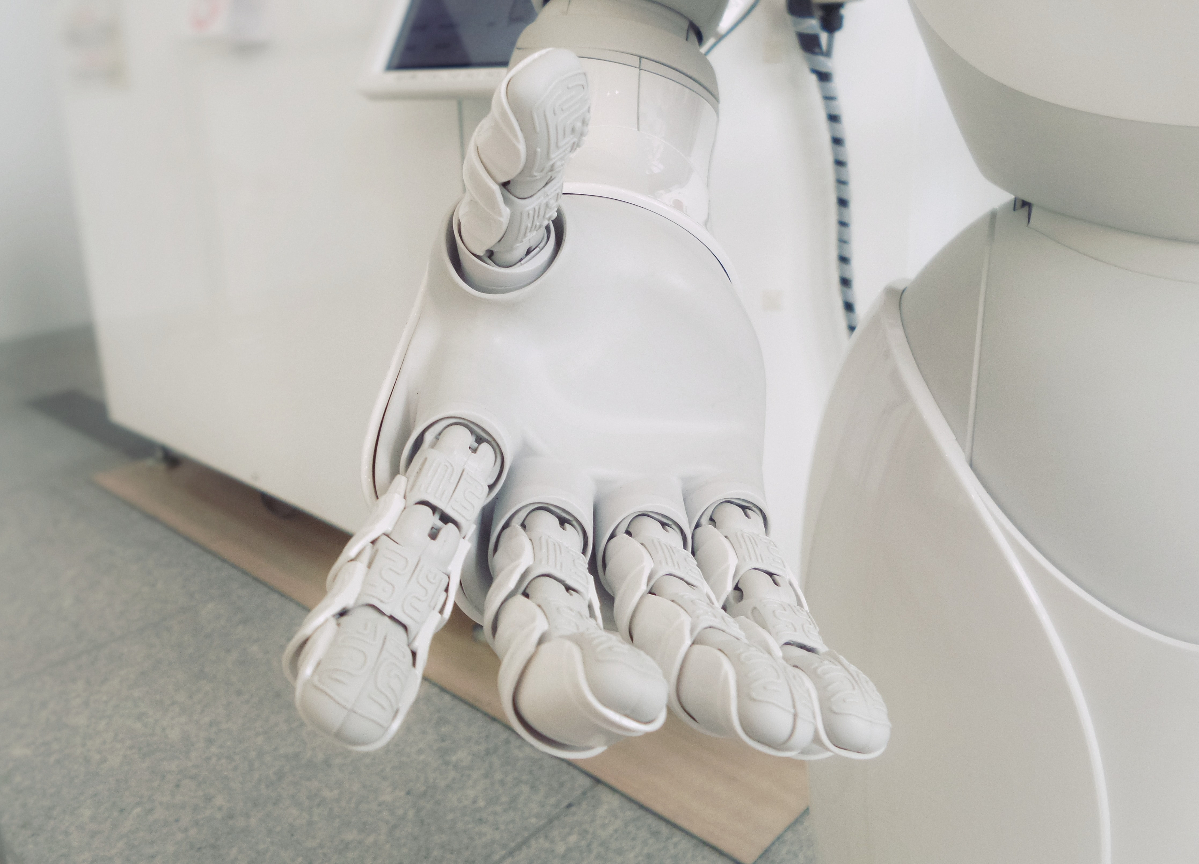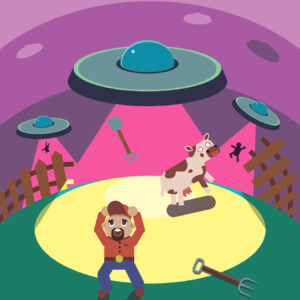AR Versus AI: The Complete Guide
What’s the first thought that comes to mind when you think about artificial intelligence (AI)? Do you think of J.A.R.V.I.S. (Just A Rather Very Intelligent System) from Iron Man? Or maybe you think of Ultron?
How about augmented reality (AR)?
What do you think about when you hear the term augmented reality? Do you think about cool futuristic tech like Tony Stark’s AR computer or maybe something like Pokémon Go?
AR is technology that superimposes a computer-generated image on your view of the world. AI is simulated human intelligence that uses computer programming to automate tasks while using logical problem-solving.
In this article, we’ll be talking a bit about AI, AR, and how those two work together to create some rather impressive things.
Artificial Intelligence
There are a variety of definitions of artificial intelligence. For this article, we’ll go with the working definition: artificial intelligence is a branch of computer science that deals with building and programming computers and smart machines to complete tasks (decision-making and problem-solving) that are typically associated with human intelligence.
Artificial intelligence isn’t just one specific type of technology. There are seven different types of artificial intelligence. These types fall under one of two main categorizations: Type 1 AI and Type 2 AI.
Type 1 AI is based on capabilities. These types of artificial intelligence are:
- Weak/Narrow AI
- General AI
- Strong AI
Type 2 AI is based on functionalities. These types of artificial intelligence are:
- Reactive Machines
- Limited Memory
- Theory of Mind
- Self Awareness
Types of Artificial Intelligence

Weak/Narrow AI
This type of artificial intelligence is capable of performing a dedicated task with intelligence. It is the most common form of AI and is available across the globe. Narrow AI is only trained for one specific task and cannot complete one beyond its limitations. This is why it is also known as Weak AI.
Examples of Narrow AI are virtual assistants such as Windows’ Cortana, Amazon’s Alexa, or Apple’s Siri. Other examples include chess-playing AI, self-driving cars, image recognition, and more.
General AI
Artificial General Intelligence (AGI) or General AI is artificial intelligence that’s able to learn, understand, perceive, and function like a human being. This means that this AI could undertake any intellectual task that a human being could. These types of AI currently do not exist and are more so works of fiction than anything else.
However, there’s a lot of work being put into making AGI a reality.
Super AI
Artificial Superintelligence (ASI), also commonly known as, Super AI is artificial intelligence that could surpass human intelligence. This type of AI would be a result of AGI and be able to outpace human beings due to faster data processing, analysis, decision-making, and greater memory.
Reactive Machines
Reactive Machines are the most basic form of AI. They do not store memories or experiences to help make present decisions. These types of artificial intelligence are created to mimic the human mind’s ability to react to stimuli.
Therefore, they only focus on present scenarios and react to them according to their programming. Since they do not store memories or use experiences to inform present actions, they do not have the ability to “learn.”
Examples of reactive machines are IBM’s DeepBlue or Google’s AlphaGo.
Limited Memory
Unlike Reactive Machines, Limited Memory AI can store memories/data for a short amount of time. These machines can then use that data to inform present decisions. Almost all current applications that we know and use fall under the Limited Memory category.
AI systems such as deep learning are examples of limited memory AI. They are trained using large volumes of training data that they can use as a reference for future problems. A common example of this is image recognition AI. Other examples of Limited Memory AI include chatbots, self-driving cars, and virtual assistants.
Theory of Mind
Theory of Mind AI is AI that should be able to understand the more immaterial sides of the human experience. These are things such as emotions, thought processes, beliefs, and even interact socially as humans do. While it’s not currently out, there are researchers working on developing the Theory of Mind AI.
Self-Awareness
This is the future and final stage of artificial intelligence. Self-aware AI will have its own consciousness, sentiments, and self-awareness. They’ll be smarter than us humans, and be their own entities.
Self-awareness is the end goal of AI research and is when artificial intelligence will reach its pinnacle, like a child you’ve watched blossomed into an adult. This type of AI will be able to feel, think, and have its own desires. Right now, self-aware AI is merely a concept and far from being a reality.
Augmented Reality
Augmented Reality (AR) is one of the three types of Extended Reality (XR). The other two are Virtual Reality (VR) and Mixed Reality (MR). Augmented reality is defined as technology that superimposes a computer-generated image on your (the user) view of the world. This can range from a simple object such as a word or even an animated emoji to a whole scene.
People often confuse AR and VR, however, while they are both extended reality technologies, they are not the same. Virtual reality is a computer-generated environment that you can interact with it in a seemingly physical way.
The key difference between AR and VR is that AR works with the existing space around you, while VR takes you out of that space and puts you in a fully digital environment.
Read our Augmented Reality vs. Virtual Reality article to learn more.
This type of extended reality is fairly common in our everyday society, with most modern smartphones and tablets built to deliver AR experiences using either Google’s ARcore or Apple’s ARkit.
Similar to artificial intelligence, augmented reality is divided into two main categories with various subcategories. The two main AR categories are marker-based, and markerless augmented reality.
Marker-based AR is as the name suggests, a marker (which can be, but not limited to, an image, QR code, line of text, or business card) is used to trigger an augmented reality experience. An example of marker-based augmented reality is our AR cards.
Markerless AR is the opposite of marker-based AR. It doesn’t require a marker or prior information about your environment to properly overlay virtual content into the scene. A common example of this would be Pokémon Go.
There are four types of Markerless Augmented Reality: location-based, projection-based, overlay, contour-based.
If you’re interested in learning more about Markerless AR, then check our more detailed article here.

The Relationship Between AI & AR
When it comes to both AI and AR, the two technologies, while distinct and separate, work together to deliver some wonderful experiences. While they both have a ways to go to do the things we see in movies or TV shows, we still use both technologies in our everyday lives.
Neither of these technologies is new either; they’ve been at play for decades. However, with the advancements in technology over recent years, we are seeing them used on a wider scale. They are also key to each other’s growth as AI helps AR apps to better recognize environments to place and interact with digital objects. While the continued and increased use of AR apps provides AI with additional information to learn and improve.
With the expected increase in demand and use of augmented reality apps, many developers are looking for better ways to fuse both AI and AR. To create these apps, developers work with software development kits, better known as SDKs.
An SDK is a set of software and development tools used by developers to create applications. There are a variety of SDKs that many developers use such as ARkit, ARcore, Vuforia, and more.
These are some of the SDKs that are used to create some handy AR apps such as IKEA Place, Measure AR, Mondly AR, and more.
Companies such as Apple, Google, Microsoft, and others are investing big in AR, AI, and future products. It’s exciting to see the apps and tech these heavy hitters will bring to the world in the coming years. What’s even more exciting is to see the creations that indie developers will bring to life using these SDKs.
Conclusion
Artificial intelligence and augmented reality may be two distinct technologies, but they are critical to each other’s development and growth. While many people may not recognize it, these are two of the technologies that will further change life as we know it. Sure, they may be different, but it’s without a doubt that they’re a match made in heaven.
Create a personal message in Augmented Reality with our selection of paper cards and eCards.






